
I. Introduction
The differences between ecotourism, sustainable tourism, and nature tourism are crucial to understand these days because responsible and sustainable tourism practices are becoming increasingly essential. Still, many of times these terms are used interchangeably, which leads to confusions.
Knowing the differences is crucial because every one of these tourism categories aims for something different and concentrates on a different aspect of travel.
Knowing these distinctions will enable you to match the appropriate type of tourism with your travel interests and goals, therefore improving sustainability, supporting environmental protection, and supporting local communities. It is imperative to find out the genuine differences between ecotourism, sustainable tourism, and nature tourism in 2024.
Why the confusion?
Misconceptions arise because “greenwashing” is so common in the main tourism industry and because ecotourism, sustainable tourism, and nature tourism overlap.
Greenwashing is the dishonest advertising of an environmentally beneficial or sustainable good, service, or company when that may not be the case.
Such acts aggravate the confusion and further mixing of these terms. Finding out the distinctions between ecotourism, sustainable tourism, and nature tourism can enable you to make choices that will respect your moral values, lessen your environmental impact, and aid the local populations and cultures.
This article will identify and describe the major differences between ecotourism, sustainable tourism, and nature tourism that will be useful for the readers in 2024.
II. Major Differences between Ecotourism, Sustainable Tourism, and Nature Tourism:
1. Key Features of Ecotourism, Sustainable Tourism, and Nature Tourism:
- The main goals of ecotourism are community service, conservation, and ethical travel.
- The goals of sustainable tourism include a low impact on the environment and a beneficial impact on society.
- Wildlife viewing is just one of the many environmental experiences that are included in nature tourism.
2. Ecotourism’s Contribution to Conservation:
- Financial and educational direct support for conservation.
- Involves tourists in efforts for environmental preservation.
- While nature tourism promotes respect for the natural world, sustainable tourism incorporates conservation techniques.
3. Economic Benefits of Ecotourism, Sustainable Tourism, and Nature Tourism:
- Communities in the area and conservation benefit financially from ecotourism.
- The financial viability of tourism is emphasized, along with the advantages to the environment and society.
- Recreational pursuits and the growth of tourism infrastructure are two ways that nature tourism boosts the economy.
4. Cultural Impacts on Local Communities:
- The preservation of indigenous customs and civilizations through ecotourism promotes cross-cultural interaction.
- The genuineness of culture and community involvement are encouraged by sustainable tourism.
- The way that people see nature and outdoor activities varies between cultures
5. Challenges in sustainability
- Juggling visitor experiences and conservation.
- The reduction of environmental effects.
- Making sure that nearby communities gain fairly.
6. Wildlife Protection and Preservation:
- Ecotourism encourages environmentally conscious approaches for wildlife protection.
- Wildlife protection is included into the operations of sustainable tourism.
- Nature tourism supports wildlife viewing, which also promotes conservation.
7.Ethical Considerations:
- Community involvement, cultural sensitivity, and care of wildlife.
- Traveling ethically and responsibly.
- Reducing harmful effects and encouraging environmental responsibility.
8. Government Policies and Promotion:
- Encouraging conservation and sustainable tourism development
- Regulating tourism activities and safeguarding natural resources.
- Encouraging eco-friendly travel practices and certification schemes.
9. Consumer Preferences and Industry Growth:
- There is a need for real experiences, sustainability, and outdoor activities.
- Fostering expansion of the natural, sustainable, and ecotourism sectors.
- Influencing advancements in the sector and tourist trends.
10. Successful Initiatives Worldwide:
- Costa Rica’s biodiversity conservation.
- Norway’s eco-friendly tourism.
- Tanzania’s wildlife safaris.
11. Educational Benefits:
- • biodiversity, environmental protection, and sustainable lifestyle.
• Responsible tourism conduct, conservation initiatives, and local cultures.
• Knowledge of biological history, ecosystems, and wildlife.
12. Biodiversity Conservation Contributions:
- Habitat preservation, species protection, and education.
- Partnerships for conservation, wildlife preservation, and sustainable land use.
- Sustainable practices, awareness, and protected areas.
13. Responsible Tourism Principles:
- Environmental care, community support, and minimization of negative effects.
- Concentrating on environmentally friendly methods, community involvement, and conservation.
- Endorsing sustainable practices, conservation, and ethical experiences.
14. Environmental Management Practices:
- • energy efficiency, restoration, sustainable resources, waste reduction.
• Programs for carbon offsets, water conservation, and green building.
• Sustainable principles; protected places; wildlife conservation.
15. Community Development Impact:
- Creation of jobs, support of small companies, and preservation of cultural legacy.
- Cultural initiatives, community-based tourism, and sustainable livelihoods.
- Prospects for income, cross-cultural interaction, and endorsement of conservation.
16.Infrastructure Requirements:
- • Transportation, waste management, interpretive centres, and eco-lodges.
• Transportation, waste management, recycling, and eco-friendly lodging.
• Wildlife platforms, hiking trails, visitor centers, and monitoring statio
17. Climate Change Considerations:
- • Conservation of ecosystems, patterns of species, and tours.
• Environmentally friendly methods, lowering of emissions, and climate resilience.
• Techniques of adaptation, sustainability, and education.
18. Technology’s Role in Sustainability:
- • Systems of management, visitor education, and conservation monitoring.
• digital marketing, energy-efficient technology, and online booking.
• Virtual experiences, nature tools, and tracking of animals.
19. Health and Safety Measures:
- • First aid, emergency procedures, animal protection, and orientation of visitors.
• Education on responsible behavior, hygiene, inspections, and readiness.
• Risk assessments; encounter protocols; and guest briefings.
20. Marketing Strategies:
- • Nature experiences, ethical travel, and conservation messaging.
• Certifications and community involvement; eco-credentials.
• Adventure activities, natural attractions, and wildlife encounters.
III. Table of Comparison:
This table offers a concise comparison of the key differences between ecotourism, sustainable tourism, and nature tourism:
| Aspect | Ecotourism | Sustainable tourism | Nature tourism |
| Focus | Environmental conservation, local community engagement | Minimizing environmental impact, supporting local economies | Outdoor experiences, wildlife viewing, nature-based tourism |
| Educational Benefits | Emphasizes conservation, biodiversity, and sustainable living | Educates about local cultures, conservation, and responsible behavior | Provides insights into ecosystems, natural history, and environmental awareness |
| Biodiversity Conservation | Supports habitat preservation, wildlife protection | Integrates conservation into practices, wildlife conservation measures | Raises awareness, supports protected areas, advocates for sustainable practices |
| Responsible Tourism Application | Focuses on conservation, community involvement | Integrates responsible concepts, emphasizes responsibility | Promotes ethical nature experiences, supports conservation initiatives |
| Environmental Management | Waste reduction, energy efficiency, and ecosystem restoration | Green building design, water conservation, carbon offsetting | Protected area management, wildlife conservation, and sustainable tourism guidelines |
| Community Development | Creates jobs, supports small businesses, and promotes cultural preservation | Fosters sustainable livelihoods, community-based initiatives | Generates income, promotes cultural exchange, and supports community-led projects |
| Infrastructure Requirements | Eco-lodges, nature trails, and waste management facilities | Eco-friendly accommodations, renewable energy systems | Visitor centers, wildlife platforms, and hiking trails |
| Climate Change Considerations | Impacts habitat conservation, wildlife migration | Implements eco-friendly practices, reduces emissions | Addresses climate change through education, sustainable practices |
| Role of Technology
|
Improves conservation monitoring, visitor education | Implements online systems, digital marketing | Enhances wildlife tracking, nature interpretation |
| Health and Safety Measures | Emergency response plans, wildlife safety protocols | Safety inspections, visitor education on responsible behavior | Risk assessments, visitor safety briefings |
| Marketing Strategies
|
Conservation messaging, responsible travel appeals | Eco-friendly credentials, sustainable tourism certifications | Highlights: wildlife encounters, outdoor adventure opportunities |
IV. Ecotourism: A Responsible Approach to Travel
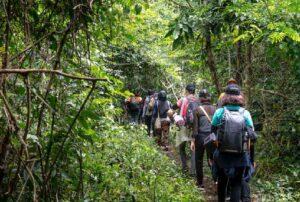
A unique travel experience, ecotourism empowers local communities and makes environmental preservation a top priority.
A. Ecotourism: A Three-Legged legged Stool
Considering ecotourism as a three-legged stool. Maintaining a balanced and sustainable structure is mostly dependent on each leg. Explore these key elements now:
1. The Conservation Leg: Safeguarding Nature’s Treasures
Ecotourism gives the environment first priority. It’s about leaving as little of a trace as possible while experiencing the beauties of nature.
This includes making sensible trips to protected places, reducing waste, and leaving these immaculate ecosystems in the same condition as we found them.
Ecotourism encourages environmentally friendly travel methods that protect the amazing biodiversity of our world over the long run.
2. The Community Leg: Advancing Locals

Beyond only helping visitors, ecotourism promotes a win-win partnership with nearby communities. It gives locals these powers:
Shared Prosperity:
Ecotourism promotes involving locals in tourist activities. This assures a more equitable sharing of the financial gains of tourism, generates jobs, and encourages a feeling of ownership in protecting local environment.
Supporting Local Businesses:
Ecotourism invites visitors to take use of the special services that nearby towns have to provide. Among these could be lodging in homestays, purchasing locally made trinkets, and dining on regional fare.
By patronizing neighborhood businesses, visitors immediately support the local economy and help to maintain traditional ways of life.
3. The Education Leg: Promoting Environmental Responsibility

More than just crossing places off a list, ecotourism. It has to do with cultivating a profound respect for the natural world and the indigenous civilizations that live there. Here’s how ecotourism informs tourists:
Through Experience:
Ecotourism excursions provide chances to discover the rich cultural traditions of the area, the fragile balance of the local ecosystems, and ethical travel methods.
Conservation Leaders in the Making:
Participating in ecotourism helps tourists better appreciate the value of conservation initiatives and the necessity of safeguarding our natural resources. They return to their own communities as proponents of sustainable methods.
These three pillars, working in concert, give ecotourism its power. Local communities prosper and the environment is preserved for future generations when tourists make ethical travel choices.
Thus, think about ecotourism when you next make travel plans; it benefits the environment, the locals, and you.
B. Advantages and Indirect Effects of Ecotourism
Many people profit from ecotourism; it is advantageous to the hosts, the visitors, and the community. The benefits and consequences of ecotourism are notable, as follows:
1. Cheerful hosts and guests:
The nature and the local people, who serve as hosts, want for ecotourism to bring them joy and purpose. It provides a chance for cultural exchange, local traditions and customs study, and contact with the natural world.
2. Leaving destinations in better condition:

Ecotourism gives ethical travel methods that reduce harm to the environment first priority. That is to say:
Natural Resources Preservation: Ecotourism promotes the wise use of energy and water resources, therefore minimizing disturbance to fragile ecosystems.
Reducing Waste and Pollution:
Ecotourism supports environmentally friendly waste disposal methods, including using reusable water bottles.
Ecotourism promotes ethical contact with ecosystems and wildlife.
It stresses staying well away from animals, honoring their habitats, and refraining from actions that might interfere with their natural habits.
Ecotourists that adopt these methods become stewards of the places they visit, helping to protect their natural beauty for future generations.
3. Developing Local Communities:

The environment and ecotourism are equally dependent on building solid relationships with the locals. It bestows upon residents these powers:
Ecotourism often supports programs managed and run by the local people. They stand to earn directly from tourism and have an impact on its consequences.
Choosing homestays, buying locally made crafts and souvenirs, and indulging in native cuisine are all encouraged by ecotourism.
This directly stimulates the local economy by preserving traditional ways of subsistence and creating a sense of ownership in the expansion of tourism.
The revenue from ecotourism gives the neighboring villages chances. It could entail spending in infrastructure, creating jobs, and finally ensuring long-term sustainability for these communities.
Thus, ecotourism is essentially moral travel that preserves natural areas, improves the experiences of both visitors and hosts, and helps nearby communities grow steadily.
V. Sustainable Tourism
A. Definition and principles of sustainable tourism:
1. Definition:
The UNWTO defines sustainable tourism as balancing the impacts on the environment, local communities, businesses, and tourists.
2. Principles of Sustainable Tourism:
Building on the concept of sustainability, sustainable tourism makes sure that an activity can go on without endangering the environment or using up resources.
Five fundamental ideas, or “pillars,” are listed by the UNWTO, while directing the creation and application of environmentally friendly tourism practices:
B. The five pillars of sustainable tourism, according to UNWTO:
1. Tourism policy and governance:
This pillar centers on putting in place efficient laws and administrative frameworks at different levels to encourage environmentally friendly travel. It entails developing rules, structures, and plans that promote the growth of sustainable tourism.
2. Trade/investment/data and competitiveness:
The need of environmentally friendly investment and trade methods in the tourist sector is emphasized by this pillar.
It entails supporting ethical and responsible tourism business operations, supporting investments that support environmental objectives, and using facts and research to make wise choices.
3. Employment / decent work and capacity building:

Sustainable tourism seeks to give local people decent working conditions and job possibilities. Programs for training, capacity building, and human resource development are highlighted.
This improves the abilities and standard of living of people employed in the tourism industry.
4. Poverty reduction and social inclusion:
Reduced poverty and social inclusion are goals of sustainable tourism.
Its main goal is to guarantee that tourism helps all members of society, especially underprivileged and vulnerable populations.
The promotion of fair tourist benefit distribution and the improvement of social well-being are part of this pillar.
5. Sustainability of the natural and cultural environment:

In tourist locations, this pillar emphasizes the need to protect natural and cultural resources.
It entails ecological conservation, biodiversity promotion, sustainable resource management, and cultural tradition and heritage preservation.
These five foundations offer a thorough structure for the growth of sustainable tourism.
C. Focus and activities of sustainable tourism:
Reduced environmental impact of tourism, support of local employment and cultural preservation, promotion of genuine tourist experiences, and heritage conservation are the goals of sustainable tourism-related activities.
The following are some instances of the focus and pursuits in environmentally friendly tourism:
1. Reducing the environmental impact of tourism:

Reduced environmental impact is the aim of sustainable tourism. This can be accomplished via different means, such:
putting into practice sustainable procedures that minimize waste, carbon emissions, and consumption of energy in tourism, transportation, and accommodation.
Encouraging recycling and waste management as well as sensible use of natural resources, including electricity and water conservation.
By encouraging appropriate visitor behavior, such as respecting wildlife and natural habitats, we can protect and preserve delicate ecosystems and biodiversity.

2. Supporting regional jobs and cultural preservation:
The need to help local communities and protect their cultural legacy is acknowledged by sustainable tourism.
3. In this sense, some actions consist of:
Encouragement of visitors to interact with locals, discover their customs, and patronize regional companies and craftspeople.
giving the locals economic prospects by hiring them for tourism-related positions like local guides, craftspeople, and service providers.
Endorsing initiatives for cultural preservation, such as the protection of indigenous knowledge, customs, and historical locations.
4. Promoting real tourist experiences and cultural preservation:
Tourism that is sustainable protects natural and cultural treasures while offering visitors meaningful and genuine experiences.
This consists of:
Encouragement of visitors to participate in respectful and fully immersed activities that provide a better knowledge of regional customs, cultures, and ways of life.
promoting, through tourism awareness-raising and conservation-related actions, the preservation of historical monuments, landmarks, and cultural practices.
Working along with local communities to create environmentally friendly tourist initiatives that highlight a place’s distinctive natural and cultural legacy.
D. Advantages and effects of eco-friendly tourism
1. Environmentally friendly tourism
This includes a number of advantages and effects that support tourist operations in the long run, while uplifting local communities and protecting cultural and natural resources for coming generations.
The following are the salient features and effects of environmentally friendly travel:
2. Making tourism operations long-term viable:
Sustainable tourism seeks to encourage long-term tourism activities that won’t exhaust resources or harm the environment.
Ecosystems, natural resources, and local communities can all benefit from tourism activities continuing to flourish when sustainable techniques are used.
3. encouraging economic expansion and empowering regional populations.

Participation and empowerment of local communities are keystones of sustainable tourism.
It aims to provide financial gains that immediately enhance socioeconomic circumstances, promote community development, and sustain local livelihoods.
Through programs like community-based tourism, where locals actively engage in and gain from tourism activities, this can be accomplished.
4. Saving cultural and ecological treasures for future generations
Sustainable tourism strives to protect and preserve cultural and natural resources for the enjoyment of present and future.
VI. Nature Tourism
A. Definition and characteristics of nature tourism
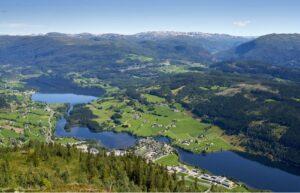
Ecotourism Australia defines nature tourism as a form of recreational travel. The main emphasis is on taking advantage of the surrounding natural beauties and participating in different outdoor pursuits. It entails going to see and being in beautiful natural settings.
Some traits of ecotourism:
Recreational travel centered on scenic locations:
Nature tourism is visiting places with stunning scenery and wildlife, such national parks and nature reserves.
B. Engagement in nature-based activities:
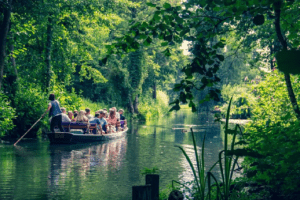
Nature tourism provides chances to take part in activities that let people fully experience the natural world. Many people choose nature tourism because they want to get close to and really enjoy the beauty of nature.
Natural tourism activities include, for instance,
1. Trekking or hiking in natural reserves and parks,
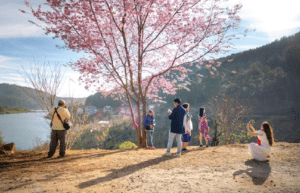
People travel to nature to see its beauty up close. The emphasis of nature tourism is on encouraging leisure and experiences rooted in the natural environment. It involves pursuits that let people to interact with and value the environment.
Several important features of natural tourism consist of:
1. Promoting outdoor activities:
Nature tourism seeks to draw attention to and encourage pursuits that let people interact with and appreciate the natural world. This can cover pursuits like camping, hiking, trekking, wildlife watching, nature photography, and discovering untouched scenery.
2. Recreation in nature:
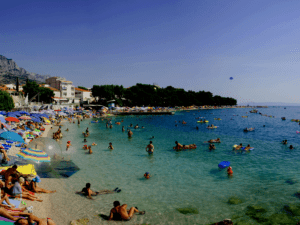
Nature tourism often emphasizes recreational activities that take place in natural settings. Most of the time, nature tourism highlights outdoor leisure activities.
This can be any number of outdoor activities, including fishing, kayaking, canoeing, bird watching, or just soaking in the peace of the natural world.
3. Connecting with the natural environment:
People have chances, thanks to nature tourism, to build a relationship with the natural environment. People can now enjoy the biodiversity, peace, and beauty of natural sites.
Participating in outdoor activities might help visitors gain better knowledge and respect for their surroundings.
Offering pleasurable and rewarding experiences in natural environments is the main goal of nature tourism.
People are able to escape the city and become fully immersed in the tranquilly and beauty of nature.
It is noteworthy, therefore, that nature tourism might not necessarily include the same degree of community engagement and environmental preservation as ecotourism or sustainable tourism.
VII. Suggestions and Summary
Selecting powerful travel destination:
For a significant impact when selecting tourism options, ecotourism and sustainable tourism should be given priority. These kinds of tourism give the environment and the welfare of the local population first priority.
Through ecotourism, which emphasizes local culture, environmental preservation, and community development, you may help to preserve natural resources and sustain the way of life for the locals.
Conversely, sustainable travel seeks to lessen the detrimental effects of travel while taking into account social, economic, and environmental factors.
It is having real experiences, preserving regional history and culture, and helping to make communities sustainable.
To make sure your travel decisions have a positive effect, look for possibilities that fall into the ecotourism and sustainable tourism categories.
These tourist activities support responsible travel by advancing the well-being of the local population and the protection of cultural and natural resources for future generations.
Remember that although enjoying time in the outdoors is a great thing, nature tourism does not always involve preservation or locally beneficial activities.
Conclusion
Taking into account the several aspects of ecotourism, sustainable tourism, and natural tourism covered in this article, tourists can arrange their vacations according to their intended destinations.
It is imperative to take into account the economic, social, and environmental effects of tourism and to work in favor of tourist policies that give local communities’ welfare and the preservation of natural and cultural assets top priority in 2024.
Through well-informed decision-making, travelers may actively contribute to the development of a more ethical and sustainable tourism sector.









[…] on the environment, such as carbon emissions, habitat destruction, and pollution. By adopting ecotourism practices, travelers can minimize their impact and contribute to the conservation of ecosystems and […]
[…] implementation of regulations in ecotourism can undermine its core principles and lead to negative impacts on the environment and local […]
[…] Ecotourism often involves partnerships with local communities, providing economic benefits and empowering them to take an active role in conservation efforts. Local people are frequently involved in guiding, hosting, and managing eco-lodges. […]
[…] is crucial to provide top priority to sustainable tourism initiatives that concentrate on preservation and reduce harmful environmental […]